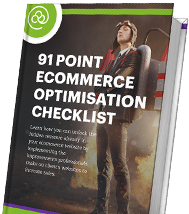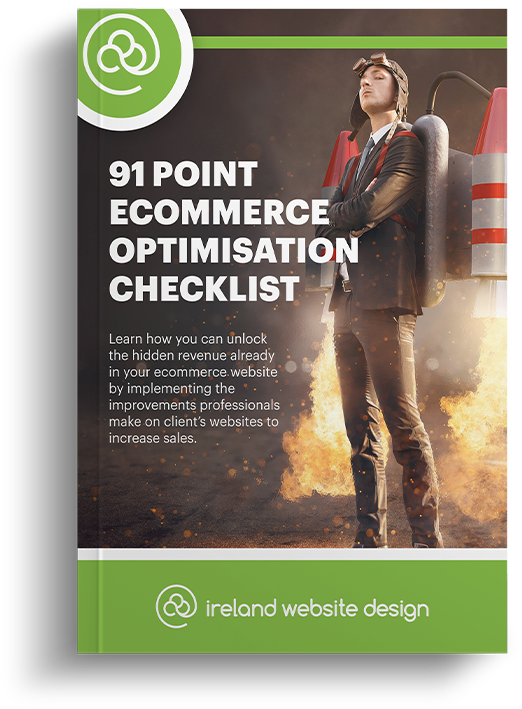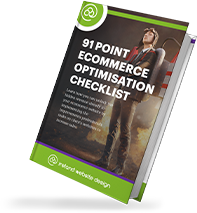When setting up an ecommerce platform, you need to make many decisions about product arrangement and company presentation on your website. A/B testing, or split testing, can help you solve this conundrum by comparing two versions of a webpage, app, email, or digital asset to determine which achieves specific goals you’ve set early on. For example, if you want to increase conversion rates, click-through rates, or user engagement. Versions A and B are randomly shown to users, and then you can analyze their interactions to identify the superior performer.
A/B Testing is crucial for enhancing ecommerce user experience (UX) as it impacts conversion rates, customer satisfaction, and revenue. With this process, businesses gain insights into user behavior and purchasing decisions by systematically testing variations of key elements such as headlines, calls-to-action, product descriptions, pricing strategies, checkout processes, and visual design.
To help you get started, we will discuss ecommerce UX and some metrics you can consider in your online experiments for conversion insights in this article.
What is Ecommerce UX?
Ecommerce User Experience (UX) refers to the overall experience a user has when navigating an online store. In any ecommerce strategy, it is one of the most important factors to consider because it directly affects how easily users can find and purchase products. This affects how well you can influence their satisfaction and likelihood of returning to buy products. Here are the components of ecommerce UX and how they impact customer behavior and conversion rates:
- Website Design: This encompasses the visual aesthetics, branding, color schemes, and overall layout. Designing a successful ecommerce platform helps establish trust and guides users seamlessly through the shopping experience.
- Site Navigation: Easy and intuitive navigation allows users to find what they’re looking for quickly. Clear menus, search functionality, and a logical structure are key.
- Product Display and Descriptions: High-quality images, detailed descriptions, and relevant information help users make informed decisions. Product pages should be informative and appealing.
- Checkout Process: A streamlined checkout process reduces cart abandonment rates. This includes minimizing the number of steps, offering multiple payment options, and clearly displaying costs and shipping information.
- Mobile Responsiveness: As an increasing number of users shop on mobile devices, ecommerce sites must perform well across all device types. This ensures a seamless shopping experience regardless of how the customer accesses the site.
The UX of an ecommerce website, more often than not, significantly affects customer behavior. You need to look into optimizing UX components like navigation, product display, and a streamlined checkout process that can decrease bounce rates and cart abandonment. In this way, you can build brand trust and loyalty to boost sales and encourage repeat purchases.
Planning and Implementing Your A/B Testing Strategy
Planning and implementing an A/B testing strategy requires a structured approach to ensure that the tests are meaningful and actionable and lead to improved conversion rates and customer satisfaction. Here’s a comprehensive guide to help you navigate through the process.
Set Clear Objectives for Your A/B Tests
Before beginning, it’s crucial to set clear, measurable objectives. For instance, if your goal is to increase sales, you might focus on testing elements that directly influence purchasing decisions, like simplifying the checkout process.
Identify Key Elements of Your Ecommerce Site to Test
Based on the objectives you’ve set, identify which parts of your platform need to be optimized. Here are some key elements you should consider testing:
- Call to Action (CTAs): Test variations in the wording, color, or size of your CTAs to see which leads to higher conversion rates. For example, does “Buy Now” convert better than “Add to Cart”?
- Page Layouts and Designs: Experiment with different layouts to determine which leads to longer page visits or more interactions. A/B testing could involve comparing a single column layout versus a multi-column layout for product listings.
- Product Images and Descriptions: Test different images (e.g., lifestyle vs. white background) and descriptions (e.g., bullet points vs. paragraph) to see which combination drives more sales.
- Checkout Process: Simplify your checkout process from five steps to three and measure the impact on cart abandonment rates.
- Forms and Fields: Reduce the number of fields in a sign-up form to see if it increases newsletter subscription rates.
Understand Your Target Audience and Their Preferences
Analyze customer data and feedback to understand preferences and behaviors. For instance, if your audience primarily shops on mobile devices, prioritize testing mobile responsiveness and mobile checkout processes.

Photo by Vlada Karpovich: https://www.pexels.com/photo/woman-having-coffee-while-using-laptop-4050388/
Implement A/B Tests
- Tools and Platforms: Utilize platforms like Optimizely, Google Optimize, or VWO for conducting A/B tests. These tools can help in creating variations and gather data.
- Creating Variations for Testing: Finding which design features most appeal to consumers and increasing e-commerce site conversions depends on A/B testing. Make two separate landing pages with different layouts, like putting a CTA banner to “find out the fastest degree to get” at the top instead of orienting the same CTA banner at the bottom.
This method lets you see which placement draws more attention, guiding your UX to increase interaction. Focusing on pertinent calls to action, such as investigating the fastest degree to reach, helps you meet visitors’ needs and improve the general site’s efficiency.
- Ensuring Statistical Significance: Use the tools mentioned to ensure your test results are statistically significant, meaning the data collected is sufficient to prove one variation performs better than the other.
- Timing and Duration of Tests: Run tests for a minimum of two weeks or until you achieve statistical significance. This way, you can account for variability in traffic and user behavior.
Analyze and Interpret A/B Test Results
You will need to monitor these key metrics to be able to analyze and interpret the results of your experiment:
- Conversion Rate: The percentage of visitors who take the desired action.
- Bounce Rate: The percentage of visitors who navigate away after viewing only one page. According to Semrush, a good bounce rate is 40% or lower.
- Average Order Value: The average dollar amount spent each time a customer places an order.
- Customer Retention Rate: The percentage of customers who return to make another purchase. Repeat customers spend roughly 67% more than new customers, so it would be in the business’ best interest to keep them on board.
Based on the metrics above, you should analyze the data to understand which variation of your platform performed better and why. You will then need to implement the winning elements as permanent features on your site.
If none of the versions in your A/B tests hit your key performance indicators, use it as a learning experience. Even tests that don’t yield the expected results can provide valuable insights. Understand what didn’t work and why, then refine your future tests to drive results.
Best Practices for A/B Testing in Ecommerce UX
The effectiveness of using A/B Testing to optimize your ecommerce UX hinges on these best practices:
- Start Small: To understand the A/B testing process, begin with simple tests on minor elements like CTA button colors or headline wording.
- Stay Focused: Each test should target a single, specific objective, avoiding complexity for clear, interpretable results.
- One Variable at a Time: Change just one variable between your control and test groups to accurately attribute results to that specific alteration.
- Control vs. Test Group: For precise comparisons, use a control group with the original version and a test group with the new version.
- Be Patient: Allow tests to run long enough, typically weeks, to gather enough data for statistically significant results, understanding that meaningful insights take time to develop.
Improve User Experience Through A/B Testing
Through iterative testing and data analysis, A/B testing enables businesses to implement changes that positively impact conversion rates, ultimately driving revenue and profitability through continuous improvement. By experimenting with different kinds of design elements, content layouts, navigation structures, and functionalities, businesses can identify the most effective combination that resonates with their audience. Continuous optimization through A/B testing leads to enhanced customer engagement, retention, and increased sales.




